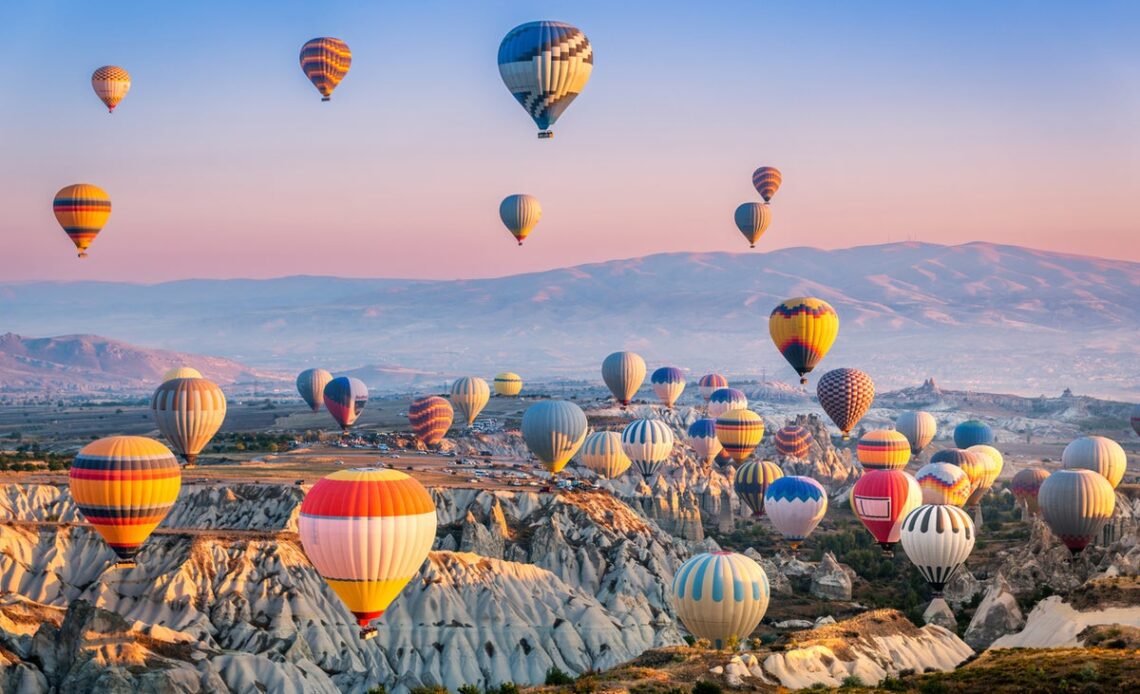Ancient volcanic eruptions and centuries of erosion have given the Cappadocia region of central Turkey one of the most distinctive landscapes in the country, if not the world. Its undulating, rose-tinted valleys are speckled with the towering tufa formations dubbed “fairy chimneys”. The same soft rock that was slowly shaped by nature was also worked by human hands to form thousands of cave dwellings, churches, monasteries and even entire underground cities.
Though it’s one of Turkey’s top tourist draws – just under four million foreign visitors went there in 2019 – the size of the region and the richness of its offerings means travellers can find plenty of opportunities to escape the crowds. Add in an ancient wine culture, increasingly sophisticated dining and accommodation options, and a wealth of outdoor activities and this is a destination of a lifetime that could be visited again and again.
Here’s how to make the best of a Turkey holiday in Cappadocia.
When to visit
Cappadocia’s scenic valleys are especially pretty in spring, when wildflowers are in bloom; autumn weather is equally well-suited for exploring. Temperatures can be unpleasantly hot in summer, when prices and occupancy rates also spike. Winter is sleepy, but magical if you’re lucky enough to catch the landscape covered in snow.
Explore this intriguing region on foot
(Jennifer Hattam)
Read more on Turkey travel:
What to see and do
Visit the Göreme Open-Air Museum
Cappadocia’s long history as a centre for Christianity is on splendid display in the Göreme Open-Air Museum, a stunning complex of rock-cut monasteries and churches, mostly dating from the 10th to 12th centuries and many adorned with vivid frescoes. Some of the finest of these paintings are found in the Tokali Kilise (Buckle Church) across the road from the main entrance but by admission to the museum.
Delve into Derinkuyu underground city
Not big on heights? Get a different perspective on Cappadocia deep in the Derinkuyu underground city, one of dozens of subterranean settlements discovered in the area. Narrow – and potentially claustrophobic – passageways wind ever further below ground through carved-out corridors and rooms once used as stables, kitchens, places of worship and wine-making facilities.
Derinkuyu reaches underground to a depth of 85 metres
(Getty Images/iStockphoto)
Sip and…
Click Here to Read the Full Original Article at The Independent Travel…
